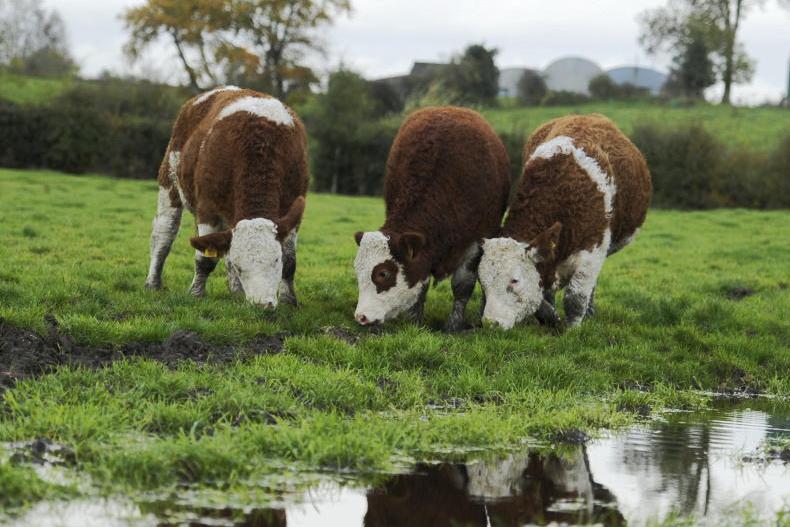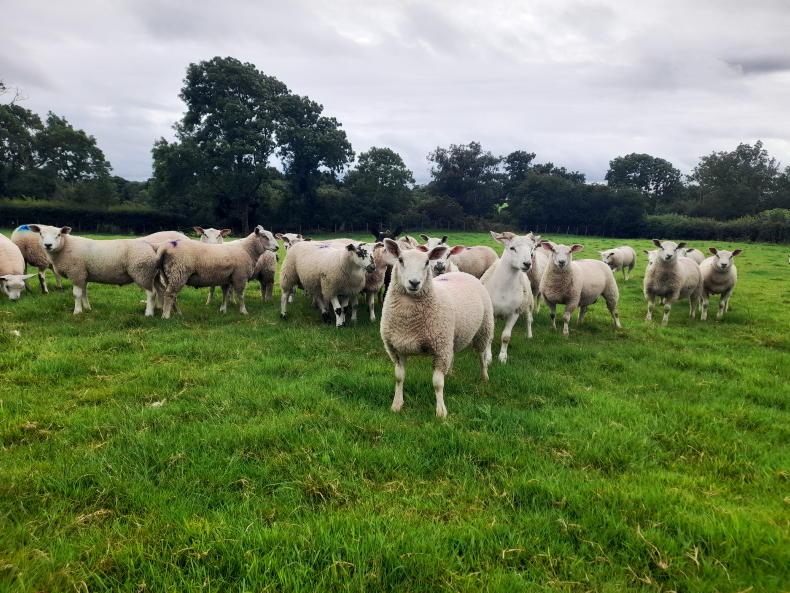The Department of Agriculture has published its nematodirus forecast for 2024, giving sheep farmers an indication of when their lambs are most likely to face the peak risk period of the damaging parasite.
Nematodirus is a species of worm and its eggs tend to hatch over a short window leading to a sudden surge in young grazing lambs’ worm burdens after the larvae are ingested.
Lambs grazing contaminated pasture at six to 12 weeks of age are generally considered to be at risk of the parasite, which can cause severe diarrhoea and death in some cases.
The forecast shows that peak hatching occurred in much of Munster and south Leinster at the end of March, while many areas in the midlands and northern half of the country will see peak hatching over the coming days (early April).

Estimated dates in March and April 2024 when peak Nematodirus egg hatching is expected to occur on pasture. / Met Éireann
Lambs at risk should be treated with a white drench (benzimidazoles) around two weeks after peak hatching, but consideration should be given to earlier dosing if lambs within a flock are showing clinical signs of infection with the parasite.
Keeping this spring’s lambs off pasture which was grazed by lambs or young calves can help reduce the risk of an outbreak.
Consulting a vet
The Department advised farmers to consult their vet when lambs are displaying symptoms of severe diarrhoea and straining to get an accurate diagnosis and guidance on an appropriate remedy.
During outbreaks, lambs may experience severe thirst and can be seen congregating around water troughs.
It stated that this is especially the case where lambs show little improvement after dosing as both Nematodirus and coccidiosis can occur at the same time, possibly necessitating the targeting of both pathogens in certain instances.
There are also no wormers currently on the market with effective residual activity against Nematodirus, meaning that lambs which become reinfected may need repeated treatments with a white wormer.
The advice that lambs which die unexpectedly should undergo post-mortem examination by a regional veterinary lab was also reiterated by the Department, as Nematodirus may not show clinical signs before causing death.
The Department of Agriculture has published its nematodirus forecast for 2024, giving sheep farmers an indication of when their lambs are most likely to face the peak risk period of the damaging parasite.
Nematodirus is a species of worm and its eggs tend to hatch over a short window leading to a sudden surge in young grazing lambs’ worm burdens after the larvae are ingested.
Lambs grazing contaminated pasture at six to 12 weeks of age are generally considered to be at risk of the parasite, which can cause severe diarrhoea and death in some cases.
The forecast shows that peak hatching occurred in much of Munster and south Leinster at the end of March, while many areas in the midlands and northern half of the country will see peak hatching over the coming days (early April).

Estimated dates in March and April 2024 when peak Nematodirus egg hatching is expected to occur on pasture. / Met Éireann
Lambs at risk should be treated with a white drench (benzimidazoles) around two weeks after peak hatching, but consideration should be given to earlier dosing if lambs within a flock are showing clinical signs of infection with the parasite.
Keeping this spring’s lambs off pasture which was grazed by lambs or young calves can help reduce the risk of an outbreak.
Consulting a vet
The Department advised farmers to consult their vet when lambs are displaying symptoms of severe diarrhoea and straining to get an accurate diagnosis and guidance on an appropriate remedy.
During outbreaks, lambs may experience severe thirst and can be seen congregating around water troughs.
It stated that this is especially the case where lambs show little improvement after dosing as both Nematodirus and coccidiosis can occur at the same time, possibly necessitating the targeting of both pathogens in certain instances.
There are also no wormers currently on the market with effective residual activity against Nematodirus, meaning that lambs which become reinfected may need repeated treatments with a white wormer.
The advice that lambs which die unexpectedly should undergo post-mortem examination by a regional veterinary lab was also reiterated by the Department, as Nematodirus may not show clinical signs before causing death.











SHARING OPTIONS